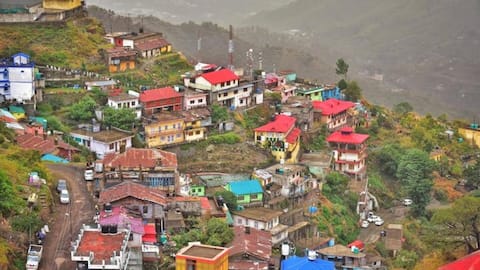Exploring the historical landmarks of Shimla
What's the story
Nestled in the foothills of the Himalayas, Shimla, the capital of Himachal Pradesh, is a picturesque hill station renowned for its colonial charm, scenic beauty, and cool climate. Once the summer capital of British India, Shimla is home to numerous historical landmarks that offer a glimpse into its rich past. Here are five famous historical landmarks in Shimla that are worth visiting.
Open space
The Ridge
The Ridge is the heart of Shimla, a vast open space along the Mall Road. This iconic landmark offers panoramic views of the snow-capped mountains and is a hub for cultural activities and local festivals. It is home to several colonial-era buildings, including the Tudor-style library and the neo-Gothic Christ Church, the second oldest church in North India.
Grand interiors
Viceregal Lodge
Perched on Observatory Hill, the Viceregal Lodge, built in 1888, is a stunning example of Jacobethan architecture. Once the summer residence of British Viceroys, it now houses the Indian Institute of Advanced Study (IIAS). Visitors can explore its grand interiors, expansive gardens, and rich collection of historical artifacts, making it a significant historical landmark and architectural marvel.
Tall spire
Christ Church
Christ Church on the Ridge is a prominent Shimla landmark and North India's second-oldest church. Known for its neo-Gothic architecture, stunning stained glass windows, its spire and clock tower are visible from various points in Shimla, making it a central feature of the town's skyline. The church's rich history and tranquil setting make it a must-visit for history buffs and architecture enthusiasts.
Cultural hub
Gaiety Theatre
The Gaiety Theatre, situated on Mall Road, is a splendid example of Victorian-era architecture and a cultural hub in Shimla. Inaugurated in 1887, this historic theatre has hosted numerous performances, including plays, musicals, and cultural events. After extensive restoration, the Gaiety Theatre continues to be a vibrant center for arts and culture, offering visitors a chance to experience its historic charm and lively atmosphere.
Administrative
Town Hall
Constructed in 1910 during British rule, Shimla's Town Hall was built when the town served as the summer capital. Government officials moved there each summer, prompting the need for administrative buildings and residences. The Shimla Municipal Board, established in 1851 managed essential functions like roads, sanitation, water supply, drainage, and tax collection. The Board laid the foundation stone for the Town Hall.
